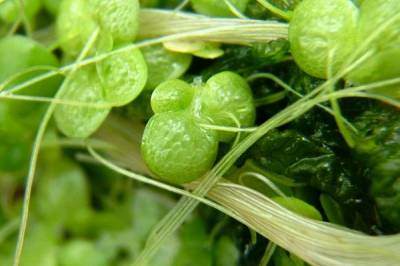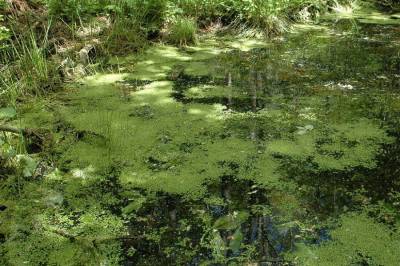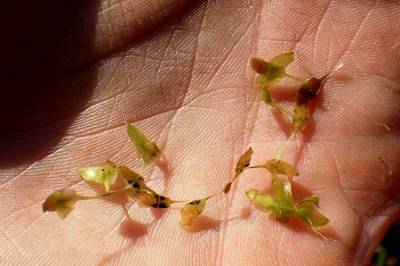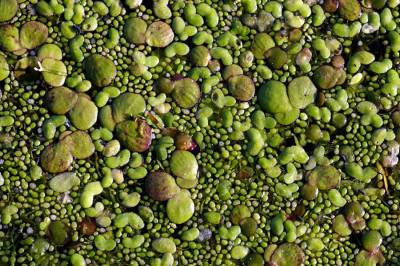


|
Main » 2012 » September » 21
The family
of duckweeds, Lemnaceae, is represented by small floating plants, icluding the smallest flowering plants in the world (Les et al., 2002).
Duckweeds grow preferentially in still or slow moving fresh water around
the globe, except the coldest regions. These plants are high-protein (e.g., Culley et al., 1981; Iqbal, 1999) and inhabited by numerous invertebtrates (macrozoophytos). In particlular, Lemna is one of the
best known groups in this family that has been the subject of much research. In the European region, duckweeds include chiefly the following widespread species:
Lemna gibba, gibbous or fat duckweed
Lemna minor, lesser duckweed
Lemna trisulca, ivy-leaved or star duckweed
Lemna turionifera, turion duckweed
Spirodela polyrhiza, greater duckweed or duckmeal
 Lemna gibba, gibbous or fat duckweed Lemna gibba, gibbous or fat duckweed Lemna minor, lesser duckweed Lemna minor, lesser duckweed

Lemna trisulca, ivy-leaved duckweed
 Lemna turionifera, turion duckweed Lemna turionifera, turion duckweed
 Spirodela polyrhiza (large), Lemna minor (medium), Wolffia arrhiza (small) Spirodela polyrhiza (large), Lemna minor (medium), Wolffia arrhiza (small)According to Kargapol’tseva & Vasiljeva's data (2011), macrozoophytos organisms, associated with duckweeds, are represented by more than 100 types of aquatic invertebrates. On the diversity, Arthropoda (59% of general number) are most abundant, including 57 species of Insecta. Interestingly, crustaceans are only represented by one species, Acellus aquaticus (Isopoda). Mollusca occupy the second place (30% of general number of species), including Gastropoda (17 species) and Pulmonata (15 species). Among molluscs, water snail, Anisus vortex, is dominant on the density and biomass almost in all studied duckweed localities (Kargapol’tseva & Vasiljeva, 2011).
In these localities, Spirodela polyrhiza, Lemna turionifera, L. minor and L. trisulca were dominant.
Practically the same species of invertebrates associated with duckweeds were observed in other water bodies of Russian Federation (see references cited by Kargapol’tseva & Vasiljeva, 2011).
...
Read more »
| |
|

|








